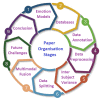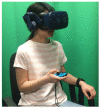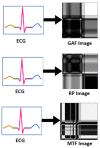A Survey on Physiological Signal-Based Emotion Recognition
- PMID: 36421089
- PMCID: PMC9687364
- DOI: 10.3390/bioengineering9110688
A Survey on Physiological Signal-Based Emotion Recognition
Abstract
Physiological signals are the most reliable form of signals for emotion recognition, as they cannot be controlled deliberately by the subject. Existing review papers on emotion recognition based on physiological signals surveyed only the regular steps involved in the workflow of emotion recognition such as pre-processing, feature extraction, and classification. While these are important steps, such steps are required for any signal processing application. Emotion recognition poses its own set of challenges that are very important to address for a robust system. Thus, to bridge the gap in the existing literature, in this paper, we review the effect of inter-subject data variance on emotion recognition, important data annotation techniques for emotion recognition and their comparison, data pre-processing techniques for each physiological signal, data splitting techniques for improving the generalization of emotion recognition models and different multimodal fusion techniques and their comparison. Finally, we discuss key challenges and future directions in this field.
Keywords: challenges; data annotation; data variability; emotion models; physiological signals; review.
Conflict of interest statement
The authors declare no conflict of interest.
Figures












Similar articles
-
Recognition of human emotions using EEG signals: A review.Comput Biol Med. 2021 Sep;136:104696. doi: 10.1016/j.compbiomed.2021.104696. Epub 2021 Aug 3. Comput Biol Med. 2021. PMID: 34388471 Review.
-
Emotion Recognition From Multimodal Physiological Signals Using a Regularized Deep Fusion of Kernel Machine.IEEE Trans Cybern. 2021 Sep;51(9):4386-4399. doi: 10.1109/TCYB.2020.2987575. Epub 2021 Sep 15. IEEE Trans Cybern. 2021. PMID: 32413939
-
Emotion Recognition Based on Weighted Fusion Strategy of Multichannel Physiological Signals.Comput Intell Neurosci. 2018 Jul 5;2018:5296523. doi: 10.1155/2018/5296523. eCollection 2018. Comput Intell Neurosci. 2018. PMID: 30073024 Free PMC article.
-
Graph Theoretical Analysis of EEG Functional Connectivity Patterns and Fusion with Physiological Signals for Emotion Recognition.Sensors (Basel). 2022 Oct 26;22(21):8198. doi: 10.3390/s22218198. Sensors (Basel). 2022. PMID: 36365896 Free PMC article.
-
Electrocardiogram-Based Emotion Recognition Systems and Their Applications in Healthcare-A Review.Sensors (Basel). 2021 Jul 23;21(15):5015. doi: 10.3390/s21155015. Sensors (Basel). 2021. PMID: 34372252 Free PMC article. Review.
Cited by
-
A Comparison of Personalized and Generalized Approaches to Emotion Recognition Using Consumer Wearable Devices: Machine Learning Study.JMIR AI. 2024 May 10;3:e52171. doi: 10.2196/52171. JMIR AI. 2024. PMID: 38875573 Free PMC article.
-
Multi-Input Speech Emotion Recognition Model Using Mel Spectrogram and GeMAPS.Sensors (Basel). 2023 Feb 3;23(3):1743. doi: 10.3390/s23031743. Sensors (Basel). 2023. PMID: 36772782 Free PMC article.
-
Eye movements and user emotional experience: a study in interface design.Front Psychol. 2025 Mar 19;16:1455177. doi: 10.3389/fpsyg.2025.1455177. eCollection 2025. Front Psychol. 2025. PMID: 40177033 Free PMC article.
-
Facial expression recognition (FER) survey: a vision, architectural elements, and future directions.PeerJ Comput Sci. 2024 Jun 3;10:e2024. doi: 10.7717/peerj-cs.2024. eCollection 2024. PeerJ Comput Sci. 2024. PMID: 38855254 Free PMC article.
-
Heart rate variability responses to personalized and non-personalized affective videos. A study on healthy subjects and patients with disorders of consciousness.Front Psychol. 2025 Apr 3;16:1560496. doi: 10.3389/fpsyg.2025.1560496. eCollection 2025. Front Psychol. 2025. PMID: 40248829 Free PMC article.
References
-
- Giordano M., Tirelli P., Ciarambino T., Gambardella A., Ferrara N., Signoriello G., Paolisso G., Varricchio M. Screening of Depressive Symptoms in Young–Old Hemodialysis Patients: Relationship between Beck Depression Inventory and 15-Item Geriatric Depression Scale. Nephron Clin. Pract. 2007;106:c187–c192. doi: 10.1159/000104430. - DOI - PubMed
-
- Schluter P.J., Généreux M., Hung K.K., Landaverde E., Law R.P., Mok C.P.Y., Murray V., O’Sullivan T., Qadar Z., Roy M. Patterns of suicide ideation across eight countries in four continents during the COVID-19 pandemic era: Repeated cross-sectional study. JMIR Public Health Surveill. 2022;8:e32140. doi: 10.2196/32140. - DOI - PMC - PubMed
-
- De Nadai S., D’Incà M., Parodi F., Benza M., Trotta A., Zero E., Zero L., Sacile R. Enhancing safety of transport by road by on-line monitoring of driver emotions; Proceedings of the 2016 11th System of Systems Engineering Conference (SoSE); Kongsberg, Norway. 12–16 June 2016; pp. 1–4.
-
- Ertin E., Stohs N., Kumar S., Raij A., Al’Absi M., Shah S. AutoSense: Unobtrusively wearable sensor suite for inferring the onset, causality, and consequences of stress in the field; Proceedings of the 9th ACM Conference on Embedded Networked Sensor Systems; Seattle, WA, USA. 1–4 November 2011; pp. 274–287.
LinkOut - more resources
Full Text Sources
Miscellaneous

